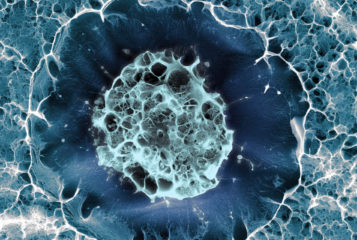The Royal College of Obstetricians and Gynaecologists (RCOG) has issued an updated version of its Scientific Opinion Paper on Umbilical Cord Blood Banking. The report finds that there is little evidence to recommend the practice whereby private companies collect and store umbilical cord blood for up to twenty years - at a charge of up to £1500 - for possible future use. The NHS currently collects cord blood from selected centres in the UK, where women are approached during the maternity period and offered the opportunity to donate.
Cord blood stem cells have been useful in the treatment of cancers such as leukaemia. The NHS public bank collects 1700 to 2000 samples each year which may be accessed by those in need. Cord blood storage is also offered to families affected by specific genetic disorders that may be treatable with a transplant, for example Fanconi anaemia. Critics say that private companies play on parents fears, with the offer of future speculative treatments for many conditions not currently treatable with cord blood. Professor Peter Braude, head of the Department of Women's Health at King's College London and chair of the RCOG expert group commented, 'The likelihood of use is extremely small and some of the uses are extremely speculative'. Professor Braude went on to say that, 'Most people are unaware there is an NHS cord blood bank and most transplants are done with bone marrow'.
The RCOG committee called for increased funding into the NHS bank so that more samples could be collected and those in need could have better access. They warned that there is currently 'insufficient evidence' to recommend private collection and storage. Demand for private cord blood banks has increased recently with around 11,000 British couples opting to store their child's blood using companies such as the UK Cord Blood Bank, Smart Cells and Future Health. Susan Bewley, chairwoman of the RCOG ethics committee and a consultant obstetrician said, 'Being born is inherently quite dangerous. We meddle and fiddle with that at our peril'. The college recommends that each hospital trust needs to develop its own policy on how to deal with cord blood storage requests. Blood should only be extracted once the placenta is out of the womb and collection should be by a trained third party, not by the attending obstetrician or midwife whose care should be focused on the mother and child.
Sources and References
-
Warning over cord blood banking
-
Elixir of life' claims of cord cell storage firms speculative, mothers-to-be warned
-
'Babies at risk' from umbilical blood business
-
Umbilical cell harvest is 'risky'




Leave a Reply
You must be logged in to post a comment.